Vichysoisse

One of Julia Child's all-time favorite dishes is a classic French creation: vichyssoise. This chilled potato-leek-cream soup requires you to simply chop the ingredients, mix them together, simmer, and blend. It embodies simplicity in a bowl, although preparing and cleaning leeks can be a bit time-consuming. Additionally, it’s not a quick dish, with a recommended cooking time of nearly an hour.
Vichyssoise is named after the Vichy region in France. While there is some debate about its origin, many chefs attribute its creation to Louis Diat, who, as a child, would cool his grandmother's potato soup by adding milk. Regardless of its beginnings, this is a soup that nearly anyone can prepare. Its straightforward nature makes it an excellent platform for showcasing fresh, high-quality ingredients; since there are few additions, the quality of the components you choose will shine through.
In-N-Out

Julia Child may have adored and championed French cuisine in all its exquisite splendor, but she didn't dismiss other beloved food types. At least, she didn't dismiss most; she wasn't particularly fond of the pretentious attitude that often accompanied organic food in the past. That said, she was more than willing to indulge in fast food. While she enjoyed McDonald's and Burger King, her top choice was reportedly In-N-Out.
It's unclear which specific order she favored or if she had a preference for any secret menu items over the chain's standard burger offerings. Chef Jamie West, who drove Child to and from a culinary demonstration in California, recounted to the Ventura County Star in 2019 that they made a stop at In-N-Out on both legs of the trip. West mentioned that a staff member at a Santa Maria In-N-Out kept glancing at them and eventually inquired if the woman he was with was Julia Child.
Sole meunière

Julia Child's life post-1948—and her numerous contributions to the culinary world—would have taken a different path had she and her husband opted to wait for a meal after their arrival in France. Instead, they decided to have lunch at Restaurant La Couronne in Normandy, close to where they first entered the country. It was there that Paul Child ordered a meal featuring oysters, green salads, and sole meunière.
Child was captivated by the food, particularly the sole meunière. This dish, a simple white fish in a lemon and butter sauce, left a lasting impression on her. It was not only her first experience with authentic French cuisine but also the first time she had tasted fish that wasn't either fried after a fishing trip or simply poached at home. The dish was a revelation for Child and ignited her passion for mastering French cooking.
Goldfish crackers
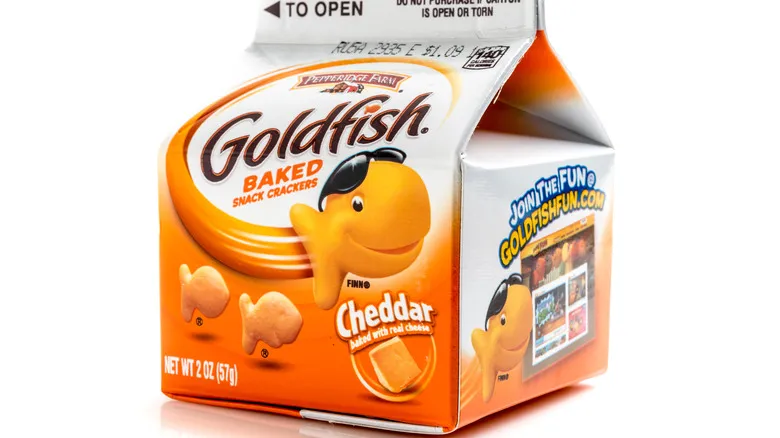
You might picture Goldfish crackers from Pepperidge Farm as something Julia Child would never consider. Typically linked to picky toddlers and bored children seeking snacks, this assumption is misguided. In reality, Child had a fondness for the cheesy orange treats and would purchase large boxes from a discount store owned by Pepperidge Farm. She even served them at Thanksgiving alongside her favorite martini, not for novelty, but because they paired exceptionally well with the drink.
Interestingly, Child was still indulging in a European delicacy. Goldfish crackers were inspired by a similar snack from Switzerland. When Margaret Rudkin, the founder of Pepperidge Farm, sold the company to Campbell's Soup Company in 1961, she continued to serve on the board and sought out new products. One of these was the Swiss fish-shaped cracker, and Rudkin successfully acquired the recipe. As for the perception of Goldfish crackers as children's food, they were originally intended as a bar snack for adults. It wasn't until the 1990s that marketing efforts shifted to target parents for their kids. As of 2022, Pepperidge Farm has been redirecting some of its marketing efforts back toward adult consumers.
Tuna salad with Hellmann's mayo
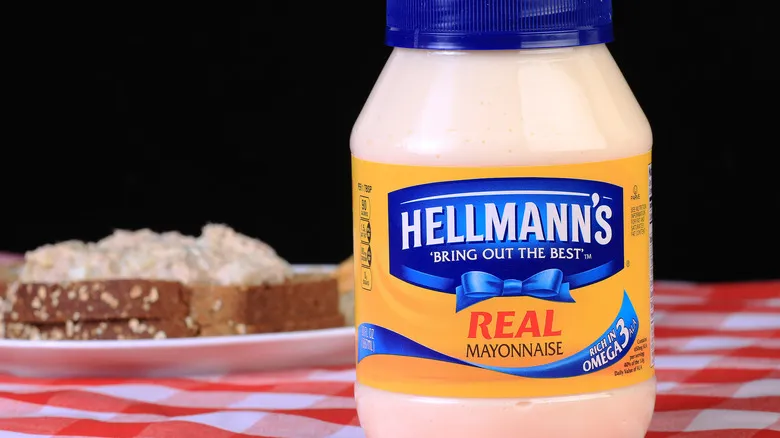
If you had the chance to have lunch at Julia Child's home back in the day, would you have anticipated a sophisticated French dish? Surprisingly, that wouldn't have been the case. Instead, Child would have offered you tuna salad, either served open-faced on half an English muffin or nestled between two slices of Pepperidge Farm white bread — and she always used Hellmann's mayonnaise.
Child chose this dish for two main reasons. First, she genuinely enjoyed it, but equally important, it was a simple and quick meal that still delivered great flavor. She preferred not to serve elaborate meals at lunchtime, which is why the tuna sandwich became a regular feature at her midday gatherings. Even as she was preparing to transition from her Massachusetts home to a retirement community in California, she was eager to make it for her guests. However, when she promised a tuna sandwich to a reporter, she opted at the last minute to prepare a lobster salad sandwich instead, using the same recipe.
Île flottante
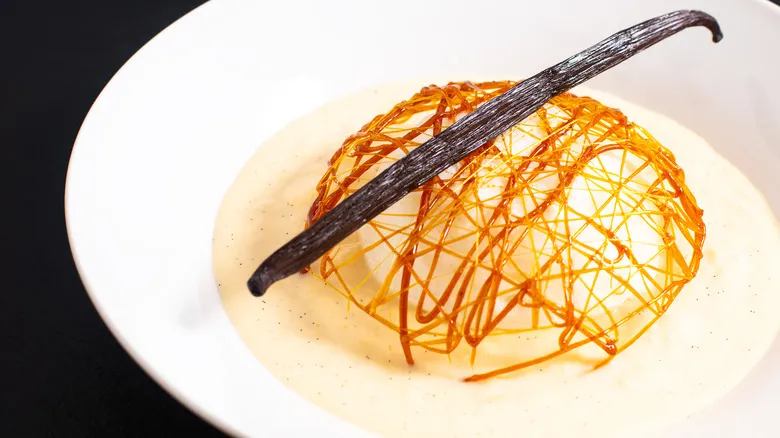
The elegant île flottante translates to "floating island," which perfectly captures the essence of this dessert. It's a favorite of Julia Child, though it is quite a sweet treat. If you have a penchant for sugary desserts, this one is definitely worth trying. However, if you prefer less sweetness, consider requesting a smaller serving.
Île flottante is a classic recipe, likely originating as a budget-friendly dish in home kitchens before making its way into restaurants and cookbooks. The "floating island" consists of a mound of poached or baked meringue (Child favored the baked version) that appears to "float" in a pool of crème anglaise. If you choose to poach the meringue, do so in milk; the meringue itself is made from just egg whites, cream of tartar, and sugar. It is often garnished with caramel sauce or some form of sugar art. The crème anglaise is a simple custard sauce. While the recipe may not be the easiest, it is quite manageable if you are familiar with making egg custards and meringues.
Costco hot dog

Shopping at Costco with Julia Child would have been an incredible experience, not just to witness her purchases. You might even catch a glimpse of the culinary icon, renowned for introducing French gourmet cuisine to American kitchens, enjoying a hot dog from the Costco food court. Surprisingly, it was one of her favorite treats, and she always made a point to grab one at the food court in Goleta, California, close to her retirement home in Montecito.
It turns out that Child was a fan of Costco and frequently shopped there for her culinary needs. In addition to those hot dogs, she particularly enjoyed the selection of meats. If she was preparing steaks for guests, you could be sure the meat came from the local Costco warehouse. Every shopping trip included a visit to the food court for a hot dog after she finished her grocery shopping.
Upside-down martini (a.k.a. reverse martini)
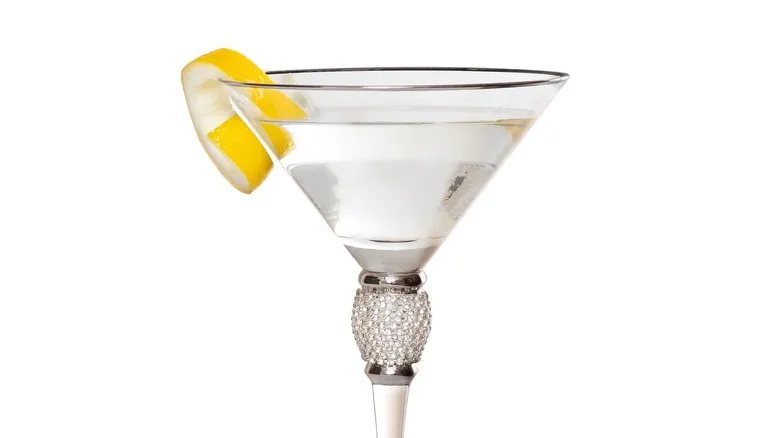
The upside-down or reverse martini is aptly named as it literally flips the ratio of ingredients found in a traditional martini. A classic martini consists of five parts gin or vodka to one part vermouth. Julia Child, who favored this variation, would prepare hers with one part gin or vodka and five parts extra-dry vermouth, garnished with a twist of lemon. In fact, this was her preferred drink to enjoy alongside a few goldfish crackers.
One of the benefits of crafting a martini in this manner is that the overall alcohol content is significantly lower than that of a conventional gin or vodka-heavy martini. While vermouth does contain alcohol, its concentration is much less than that of gin or vodka. In a classic martini, the additional alcohol accumulates, but in the reverse version, the drink is predominantly vermouth, resulting in a much lighter option. Interestingly, this approach aligns more closely with how dry vermouth is typically enjoyed in Europe, where it is often served as a standalone drink rather than merely a mixer for stronger spirits.
Angosoda
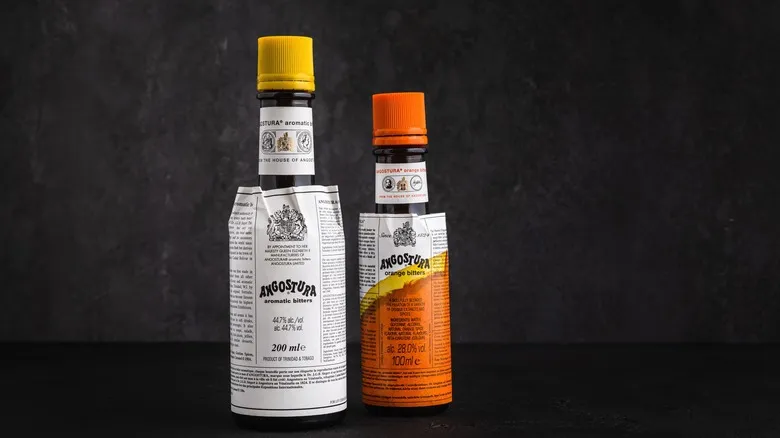
Julia Child aimed to teach her readers and viewers how to prepare French cuisine authentically, but she was also open to inventing entirely new recipes when the occasion called for it. While her preferred alcoholic beverage was the upside-down martini, she also enjoyed a unique drink of her own creation. The angosoda cocktail consists of a few drops of Angostura bitters mixed with sparkling mineral water—essentially an Angostura soda, which is reflected in its name—garnished with a slice of lime and served over ice. She devised this recipe as a way to enjoy a cocktail without consuming too many calories, a concern with the calorie-laden upside-down martini.
If you're unfamiliar with Angostura, it can be somewhat perplexing. Angostura refers to a South American tree whose bark possesses medicinal qualities. It is also the name of a company that produces Angostura bitters, which no longer contain the actual angostura compounds. Bitters are herbal infusions that may contain alcohol; some varieties do not and instead use vegetable glycerin as their base.
Chocolate almond cake (gateau reine de saba)
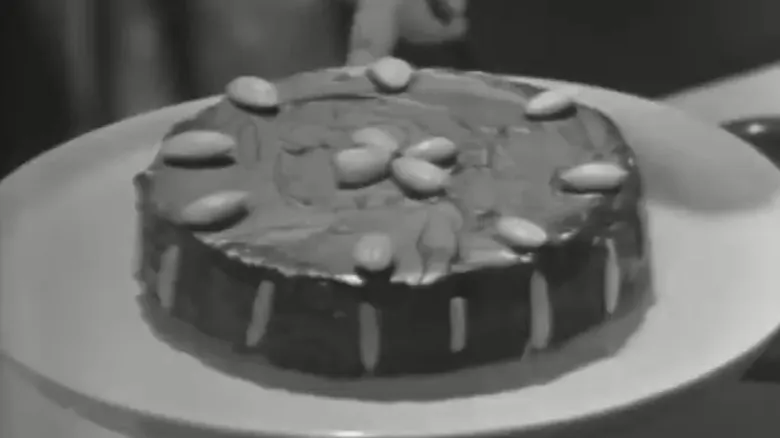
Julia Child once remarked that chocolate almond cake, or gateau reine de saba, was the first French cake she ever tasted. Much like sole meunière, this cake quickly became one of her all-time favorites. In her episode dedicated to baking this cake, she describes it as "the best chocolate cake you ever put in your mouth," and her recipe has become a timeless classic. This single-layer cake combines cake flour and ground almonds to produce a soft, rich texture, making it one of those desserts where just a small slice can be immensely satisfying. While the exterior resembles a typical chocolate cake adorned with frosting and almonds, the interior is slightly underbaked, resulting in a creamy consistency. If you're looking for a gluten-free option, you can find versions of the recipe that use only almond flour without any wheat flour.
Gateau reine de saba is also referred to as Queen of Sheba cake, but if you want to recreate the cake that Julia adored, it's best to stick with her specific recipe (or a gluten-free version that closely follows her method). It's worth noting that the name "Queen of Sheba cake" has been applied to various cakes over the years. While they all share the characteristic of having moist interiors and short baking times, the recipes vary enough that you'll want to choose carefully if you aim to make Child's version.
Tea

Julia Child's original kitchen has been relocated to the Smithsonian, where, as of 2024, it is featured in an exhibit showcasing the evolution of American cuisine. If you have the opportunity to visit, you'll spot a row of tea tins neatly arranged on a counter beside her stove. One of the cabinets above also housed tea tins, as Child and her husband enjoyed tea with their breakfast each morning. In her later years, Child mentioned that warming up tea was one of the few uses she had for her microwave oven.
While it's challenging to pinpoint her absolute favorite type of tea, she did keep a variety of Chinese and Sri Lankan teas on hand. Among the selections you might discover in the tins are China Keemun, China jasmine, Sri Lankan Cheericup Ceylon, and several types of Lapsang Souchong.
Butter
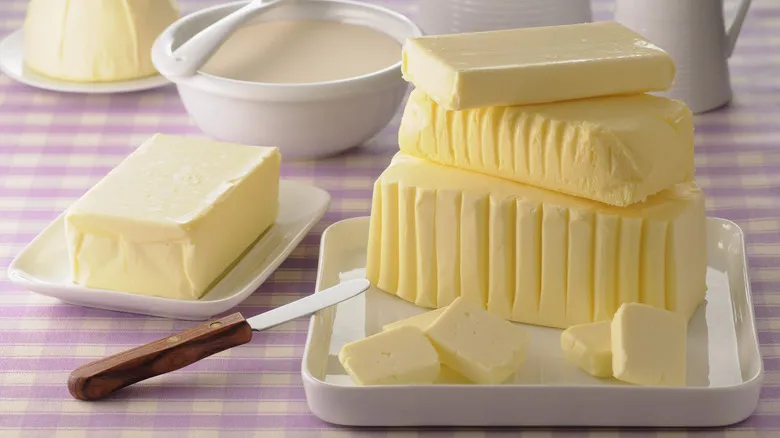
No list of Julia Child's true favorite foods would be complete without mentioning butter. This ingredient is more than just a common entry in her recipes; it’s one that Child staunchly defended throughout her career. While she did suggest that cream could be used as a substitute for butter and occasionally acknowledged the use of butter alternatives, she often followed that up with a warning that you might regret trying them.
In Child's kitchen, butter served as the foundation for delightfully simple steak sauces. If any other fat, like oil, was added to the pan, it was typically to prevent the butter from burning at high temperatures. Child's expertise in cooking and baking with butter was so profound that she could discern by taste when a recipe lacked sufficient butter. As she aged, she became more mindful of her calorie intake, yet she continued to use butter, even stating that melting it was one of the few tasks for which she utilized a microwave.
If you remain unconvinced that butter was Child's favorite ingredient, consider the statistics. An analysis from the r/dataisbeautiful subreddit revealed that butter was overwhelmingly the most cited ingredient in Child's "Mastering the Art of French Cooking," with nearly 1,600 mentions. The second most mentioned ingredient was eggs, with just over 800 references.
Recommended

Breakfast Burritos Have Been Around Forever, But When Did They Become Popular?
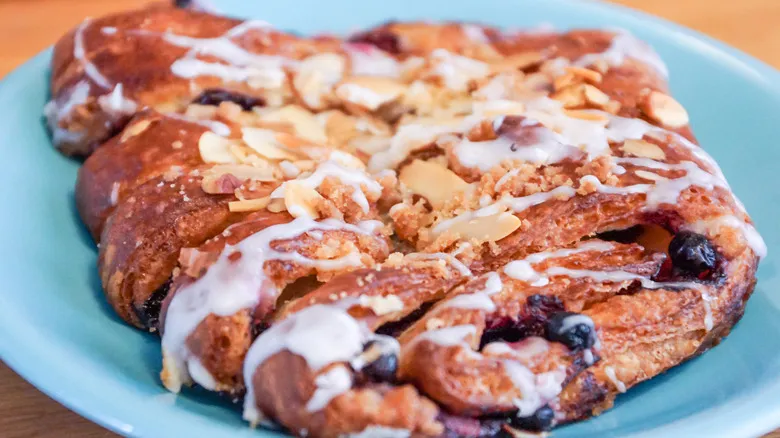
Is A Bear Claw A Donut?
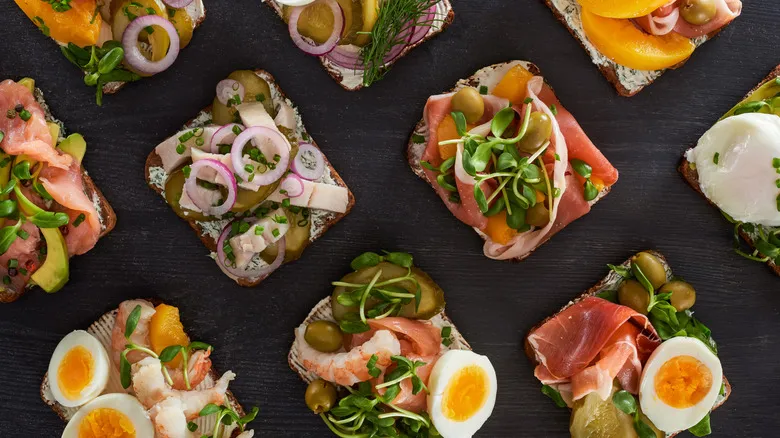
The Origin Story Of Denmark's Iconic Open-Faced Sandwiches
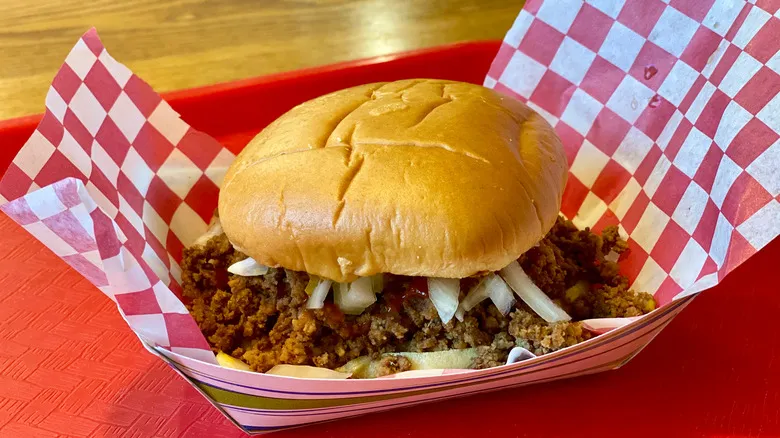
One Of Iowa's Most Iconic Sandwiches Is A Unique Twist On A Sloppy Joe
Next up

